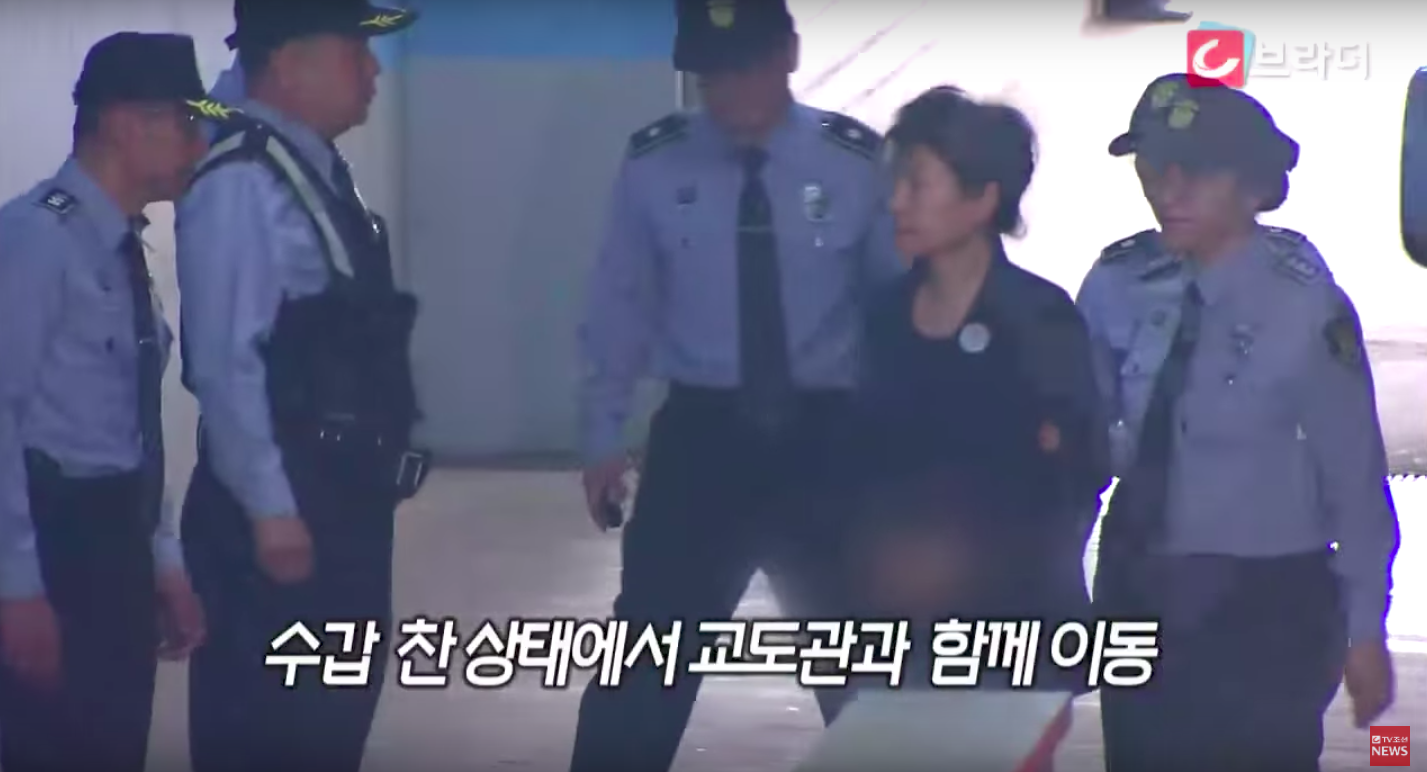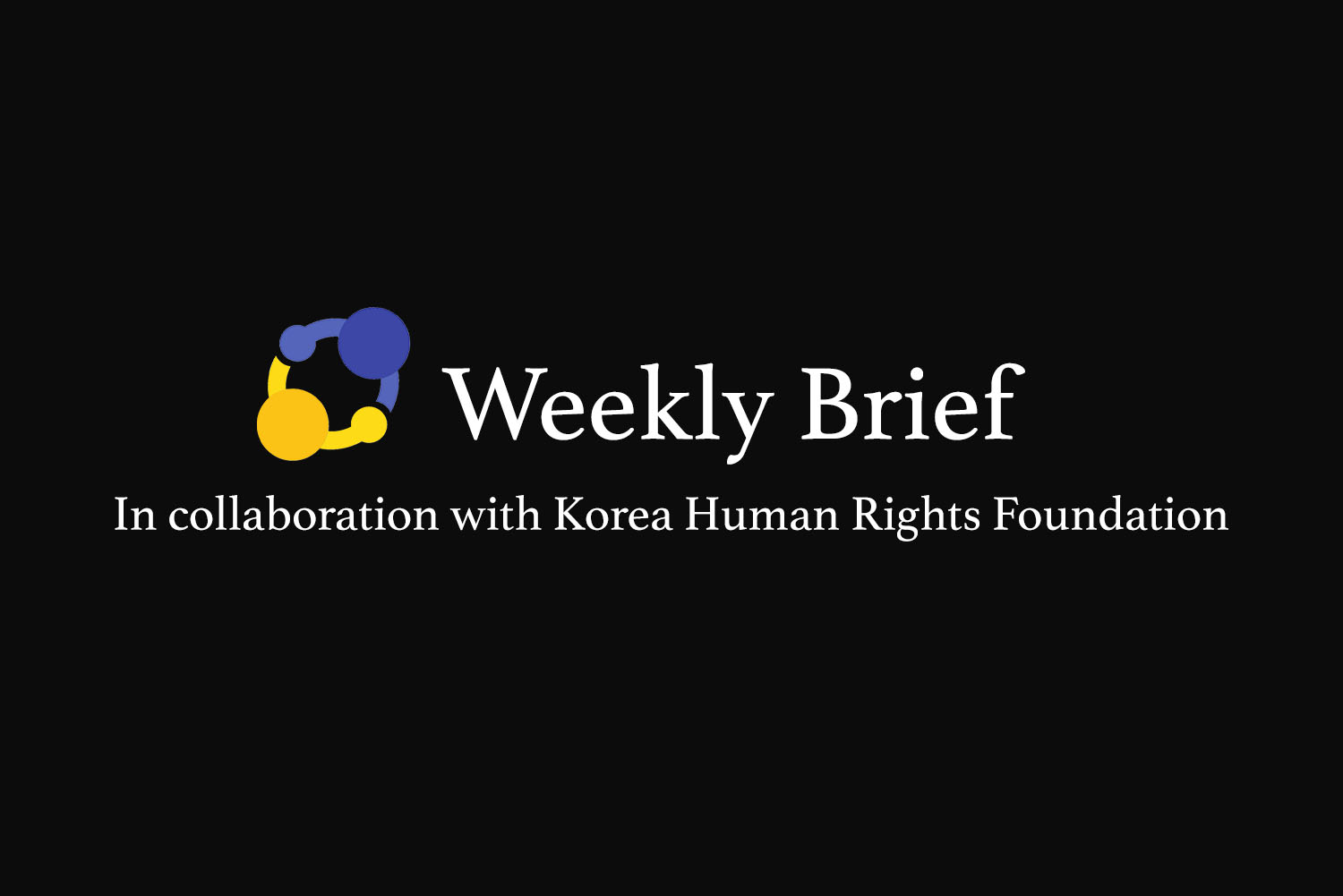
South Korean Perp Walks: What's Up With the Blurred Handcuffs?
If you happened to catch television coverage of then-South Korean President Park Geun-hye arriving for a court hearing in May, you might have noticed that before she even disembarked from the jail bus, there was a pixelated blob on the screen waiting for her.
The pixelation was strategically placed to cover the middle of Park’s torso when she stepped off the bus, thereby obscuring the handcuffs she was wearing, in line with a custom in South Korea where media outlets pixelate criminal suspects’ handcuffs.
It wasn’t always like this. In the past, when suspects in police custody appeared on television, their handcuffs were in no way obscured. But organizations including South Korea’s National Human Rights Commission have argued that publishing images of a suspect in handcuffs violates her or his rights.
Media startup Dotface released a video breaking down the legalese behind the fuzzy handcuffs, which posits that upon seeing someone in media reports clad in handcuffs, viewers will be likely to conclude that that person is a criminal, even though they haven’t been convicted of anything. Article 27 of the South Korean Constitution guarantees the presumption of innocence and police guidelines state that handcuffs shouldn’t be exposed to prevent feelings of “personal shame” for the accused.
The Press Arbitration Commission issued a document citing those standards and explaining that media outlets are not legally obligated to pixelate handcuffs, since the directive to do so is only an internal police guideline, but deeming it “desirable to protect the human rights of the suspect” by not revealing handcuffs or rope used to tie her or his hands together.
There is also a legal basis for concealing the identities of the accused: In 2012 the Constitutional Court ruled that there was no public interest reason for journalists to report the faces and identities of criminal suspects.
South Korea isn’t the only country that polices images of suspects in handcuffs. In France, the dissemination of such images is illegal. As such, many in France were outraged when in 2011 images of then-International Monetary Fund honcho Dominique Strauss-Kahn being paraded in handcuffs in New York were broadcast around the world. Strauss-Kahn was accused of sexually assaulting a member of the cleaning staff at the hotel where he was staying.
That case, and the French backlash, led to some reflection on the U.S. perp walk practice. The Atlantic wrote at the time that “the pre-trial practice of parading those accused of criminal conduct before the press is terribly prejudicial and unfair” in a piece that ran under the headline, “Hey France, You Are Right About the Perp Walk.”
Yale Law School Professor James Whiteman told NPR that the French practice is based on the premise that “everybody has the right to be treated with respect.” Reuters wrote that since the 1920s, U.S government officials, “have used perp walks to bolster public support for prosecutors.”
But is showing suspects in pixelated handcuffs any better? Surely anyone seeing those images can easily tell that there are handcuffs beneath the pixels.
The Dotface video argues that the pixelation has symbolic value: Even though viewers will recognize that the suspect is cuffed, blurring the image amounts to a tacit reminder that the suspect is still just a suspect, not a convicted criminal.
Cover image: Park Geun-hye arrives for a hearing in her trial on corruption charges, May 22, 2017. (Source: TV Chosun)

